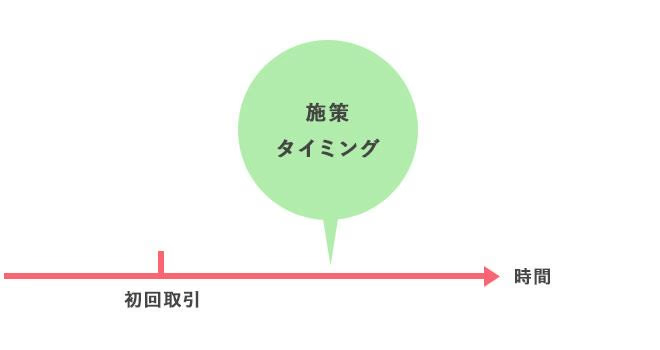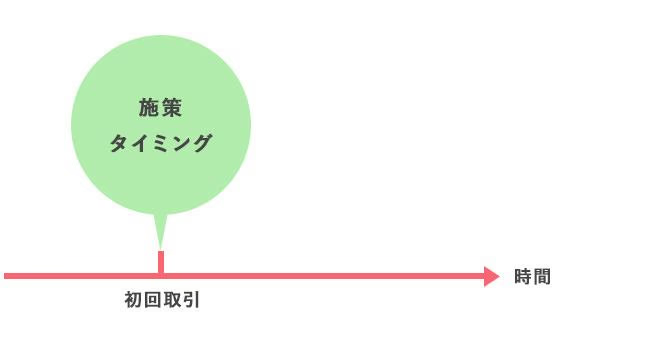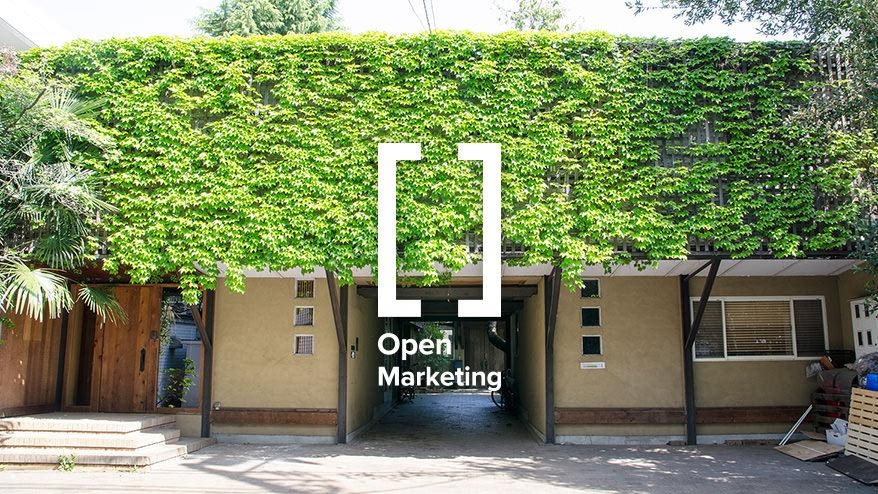みなさん、こんにちは。モノサス代表の林です。
前回まで2回に渡って Open Marketing を数値的側面から考察し、
マーケッターがなぜ新規客の獲得に追われつづけるのか
ということを検証しました。
第7回である今回は、リピート領域にまで話を移していきたいと思います。
現代のマーケティング理論が産んだ落とし穴
みなさんは、リピート率や、固定客化といった言葉を聞いたとき、
どのようなイメージをもつでしょう。
以前もお話しましたが、マーケティングの世界では
新規客を集めるための Acquisition 領域と、固定客化するための Retention 領域とに
分けて考える方式が一般的です。
しかし、この考えかたには非常に大きな落とし穴があります。
まずは、少しマーケティングの歴史の話をしたいと思います。
マーケティングという言葉は、1902年のミシガン大学の学報に
” Various methods of marketing goods ”
という記述があるのがその起源であるとされています。
マーケティングという概念は、比較的歴史の浅いものなのです。
それより以前、ものを販売するための概念としては、
貿易や交易という意味である Commerce や、
売買、取引という意味である Trade という言葉が主に使われていて、
いずれにしても双方向でのやりとりという意味合いを持った言葉が選ばれています。
対して Marketing というのは、もちろん受け手のことも考えますが、
「1対多数」というように概念が変わっていくわけです。
そして、マーケティングの世界に CRM(Customer Relationship Manegement)という
言葉が登場したのは、1990年代。
それまでも固定客化の概念はもちろんありましたが、
マーケティングの差別化要素としては、実務においても、
優先順位は非常に低い位置に数えられていたのが実態です。
私がマーケティングに携わることになった2000年あたりは、
ようやく固定客化が少しずつ重視され、CS や CRM という言葉が実務に
落ちてきたころです。
少し前置きが長くなりましたが、約110年あまりのマーケティングの歴史の中で、
固定客化が重視され、きちんと研究されはじめたのは、
ここ20年あまりのことなのです。
冒頭で Acquisition と Retention というように、
領域がふたつに分けられていることに、落とし穴があるとお伝えしました。
実は、当初マーケティングの世界では、固定客化という概念がなかったのではなく、
新規客、固定客の区別なくマーケティングが発達してきた経緯があります。
京都の「一見さんお断り」のように、固定客を重視してきた事例は
日本はもちろん、世界でも個別にはいくつも存在するのですが、
固定客化がマーケティング上重視され、きちんと研究されるのに
ここまで時間がかかった理由には、従来のマーケティングにおいて、
新規客と、固定客は長らく「いっしょくた」に扱われてきたことが
大きく影響しています。
そんな中で、市場環境の変化にともない、
「これからは固定客化のことも真剣に考えなければ」ということで
CS( Customer Satisfaction )という概念が生まれ、
さらに固定客化に取り組む中で、CRMという概念が独立して生まれたのです。
そして、この「独立して」生まれたことに弊害が集約されているのです。
固定客化が「独立して」考えられたことで、
新規客を集めることと、固定客化することが
別々に考えられることとなりました。
つまり、新規客を集め、初回の取引が行われたあと、
帰ってしまった顧客に対して、固定客化の施策が実施されることとなったのです。
その証拠に、ほとんどの大企業では、新規客対応の部署と
固定客対応の部署は別々に存在します。
では、新規客と固定客の対応を別々にすることは
なぜ問題があるのでしょうか。
それは、
「初回の取引が、最大にして、唯一の、固定客化のチャンス」
だからです。
あなたの会社の顧客になりたくて、商品・サービスを買うのではない
世の多くの企業では、固定客化施策を
「初回取引終了後の顧客に、再び購買行動を起こさせ、それを繰り返してもらうための施策」
として実施しています。
つまり、「一度、顧客を帰してしまう」のです。
そしてまた、呼ぼうとする。
多くの企業のマーケティング担当者は、
新規客との初回取引が行われたら、ひと息いれてしまいます。
顧客から、「契約します」なり、「買います」と
いう言葉を聞くなり、目的を達成したと思い込んでしまう。
しかし、一度帰ってしまった顧客を再び連れてくるのには、
大きな労力を要します。
検討段階では顧客は大きなモチベーションを持って
サービスや商品に向き合いますが、いざ購入してしまうと
モチベーションは低下します。
そのため、再度顧客を呼び込むには、多大な労力がかかるだけでなく、
多くの顧客が離脱してしまうのです。
また、多くの企業が勘違いしているのは、
初めて商品・サービスを買いに来た顧客が、
「自分の会社の顧客になった」と思ってしまっていることです。
つまり、自社を通してサービス・商品を購入したからといって、
顧客は「自分はこの会社の顧客になった」と思っているとは限らないのです。
それは仕入れたものを売っているときだけでなく、
自分たちでつくりあげた商品・サービスを売っていても同様です。
顧客は商品が欲しかったのであって、
あなたの会社の顧客になりたかったのではないのです。
しかし固定客は、自社の顧客でなければなりません。
つまり、商品・サービスを買いに来た顧客を、自社の顧客へと転換する必要があります。
そして、これを実行するのに、最適なタイミングは
初回取引時およびその前後のごく限られた時期なのです。
リピートさせるのではなく、離脱させない。
具体的な転換の方法については後述しますが、
大前提として最も大切な、パラダイムシフトについてお話します。
これまでに数々のクライアントと一緒に
プロジェクトをやってきた中で、気がついたのは、
真剣に固定客化のことを考えるのであれば、
考えかたを根本から変える必要があるということです。
それは、
リピートさせるのではなく、離脱させない。
ということです。
謎かけのような言いかたですが、
多くのマーケティング担当者は、初回のリピート率について話をする際、
「どうしたらリピート率を上げることができるか」
と言います。
しかし、それでは30%が35%、よくて40%に上がるだけなのです。
もちろんそれも成果と捉えることができますが、
初回のリピート率がそれでは、3年、5年、10年と経った時、
残存している顧客の数はごく限られています。
(このことについてはVol.5、Vol.6で詳しくお話しました。)
これでは、短期的には多少効果は出ても、将来にわたって
業績を維持、向上する顧客基盤を築くことはできません。
ただしくは、
「どうしたら離脱してしまう顧客を減らせるのか」です。
言い換えると、100%を狙った初回リピート率から
何%離脱してしまったのか、ということです。
つまり、固定客化のための施策は、
すべての新規客をどうやったら初回リピートさせられるか
という観点でつくらなければならないのです。
この観点に立つと、これまでの施策のタイミングが
決定的にずれていたことが浮き彫りになります。
多くの企業は、初回取引終了後、しばらくしてから
「再度購入しませんか」「もっとこういった商品もあります」
というアプローチを顧客にします。
媒体はメールや DM のこともあれば、電話や営業マンが訪問したりと、
業態によって様々だと思います。
図であらわすと、下記のようになります。

しかし、このタイミングでアプローチしても、初回リピート率は
通常だと30%程度、高くても50%程度になることがほとんどです。
ですから、マーケティング担当者は
「リピート率をどうやったら上げることができるか」
という発言をするのです。
ですが、このタイミングでなにかをしたところで、
状況を大きく変化させることはできません。
正しいタイミングはさきほど述べたように、
初回取引の前後なのです。

このタイミングで施策を実施することのメリットは
いろいろありますが、最大のメリットは、
新規客全員に施策を実施できることです。
初回取引時は、最も顧客とコミュニケーションが多いタイミングです。
業態によっては直接人が接客しているケースもあります。
しかし、一度帰して(店舗の場合は自宅に、オンラインの場合はサイトを離れること)
しまった顧客に100%アプローチすることは、ほぼ不可能です。
再アプローチするチャネルや媒体にもよりますが、
メールだと開封率が30%を超えるようなことはほとんどありませんし、
全員に電話をしたとしても、携帯電話が普及したいま、
会話率を50%以上にすることは、非常に困難です。
つまり、その時点で施策の到達率が激減してしまうのです。
したがって、Acquisition 領域と、Retention 領域を分けて考えた時点で、
固定客化のための施策の到達率がほぼ半分以下になることを覚悟
しなければなりません。
顧客と、長く、安定した、信頼関係を築き、
経営の基盤としていくためには、
Acquisition 領域、Retention 領域という考えかた、
ひいては固定客化という考えかたすら改めなければならないのです。
今回もまたずいぶんなボリュームになってしまいました。
最後までおつきあいいただきありがとうございます。
少し概念的な内容が多かったのですが、
今後お話していくことを理解していただくためにも
しっかりとお伝えしたかった内容です。
次回は、今日の考えかたに基づく、初回取引時の
施策の具体的なお話をしたいと思います。

